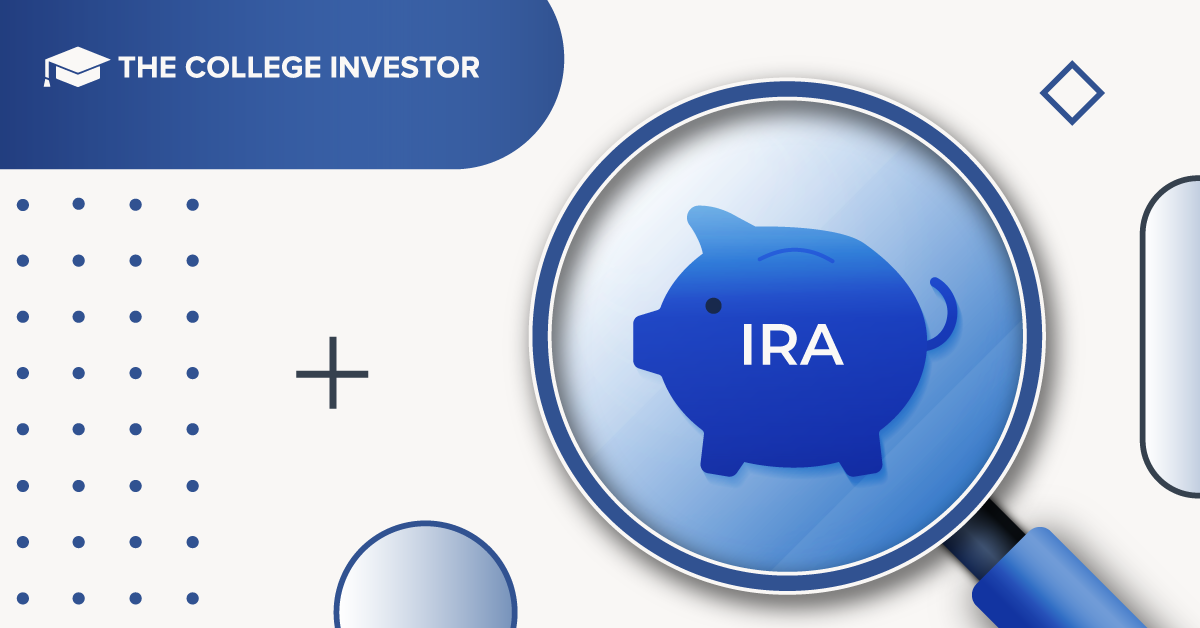
IRA Financial is a self-directed IRA manager that provides retirees, W-2 earners, and self-employed individuals with access to alternative investments, such as real estate and cryptocurrency.
You can open an account online and add funds through a transfer or rollover from an existing retirement account, or add funds directly from your bank.
In this full review, we cover the key features, pros and cons, and explain who the platform is best suited for;
|
IRA Financial Details |
|
|---|---|
|
Product Name |
Self-directed retirement plans |
|
Accounts |
Self-directed IRA, Solo 401(k), ROBS, IRA Crypto |
|
Annual Pricing |
$399 to $1,200 per year |
|
Promotions |
None |
What Is IRA Financial?
IRA Financial is an IRA custodian serving individuals who are looking for alternatives to traditional retirement plans, such as IRAs and 401(k)s. These plans often limit investors to stocks, bonds, and investment funds, such as mutual funds and exchange-traded funds (ETFs).
As a custodian, IRA Financial does not offer its own investment products, rather they administer self-directed IRAs, solo 401(k)s, etc. According to the company, it has helped over 24,000 clients across 50 states, and holds over $3.2 billion in alternative assets.
What Does It Offer?
As mentioned, IRA Financial offers access to self-directed IRAs (including LLC), Solo 401(k)s, IRA-approved ROBS solution accounts, and IRAfi Crypto for investing exclusively in cryptocurrencies. Here’s a closer look at each product type:
Self-Directed IRAs
Self-Directed IRAs are similar to traditional IRAs in that they are a tax-advantaged retirement vehicle. However, they offer investments not available via traditional IRAs, including real estate, private businesses, cryptocurrencies, precious metals, and more.
You can still invest in stocks, ETFs, bonds, etc., but you are able to diversify further using alternative assets.
Below are the two types of self-directed IRAs offered by IRA Financial, and their key features:
|
Custodian-Controlled Self-Directed IRAs |
Self-Directed IRA LLC With Checkbook Control |
|---|---|
|
|
|
|
|
|
|
|
|
|
Solo 401(k)
A solo 401(k) is a retirement plan for self-employed individuals with no full-time employees, besides the owner themselves and their spouse. IRA Financial offers what’s known as an open-architecture Solo 401(k) account, for added flexibility.
Planholders can access a Roth IRA sub-account, and invest in a wide variety of alternative investments. There is even a loan feature, which allows you to borrow up to the lesser of $50,000 or 50% of your account value.
Planholders have full checkbook control, which means you don’t have to involve the custodian (IRA Financial) whenever you make a transaction. And as long as your account balance is under $250,000, you should be able to avoid annual account filing.
Roll-Over As Business Startups (ROBS)
IRA Financial allows you to use your retirement savings to fund a new business or existing business, through a ROBS Plan. Here’s IRA Financial’s 6-step process:
- Establish a C Corp.
- The C Corp adopts a prototype 401(k) plan.
- Elect to participate in the new 401(k) plan, then rollover funds from a previous employer’s 401(k) plan.
- Purchase your C Corporations newly issued stock through the new 401(k).
- The C Corporation buys assets for the new business using the proceeds from the stock sale.
- You can now draw a salary from the business earning’s, and personally guarantee a business loan.
A ROBS plan gives you access to capital without having to pay any early withdrawal penalties or taxes. Of course, there are ongoing costs, and risks involved. If your business fails, you could lose all of your retirement savings.
IRAfi Crypto
IRAfi Crypto is a custom retirement account platform, built by IRA Financial, and exclusively for buying, selling, and trading crypto assets. Features include:
- 1% fee per trade
- $10 minimum per trade
- Invest in over 30 popular tokens including Bitcoin and Ethereum
- No need for an LLC
- $100 annual fee
Clients can upgrade to a full-service IRA Financial account at any time and the IRAfi Crypto platform would then be included for free.
Are There Any Fees?
It’s free to open an IRA Financial account. Once you transfer in funds, your fees will depend on the type of account you open. Here’s a pricing breakdown:
|
|
Self-Directed IRA |
Self-Dir. IRA LLC |
Solo 401(k) |
ROBS |
|---|---|---|---|---|
|
Setup Fee |
$0 |
$999 |
$999 |
$3500 |
|
Annual Fee |
$495 |
$495 |
$399 |
$1200 |
How Does IRA Financial Compare?
IRA Financial is one of many self-directed IRA custodians.
Alto IRA has low annual fees and offers clients a wide range of alternative investments, such as venture capital, real estate, crypto, and private deals. However, it is limited in the types of accounts and investments you can have. So while it’s less expensive, it’s limited.
The Entrust Group is a self-directed IRA and Solo 401(k) provider, but unlike most platforms, it also offers access to self-directed HSA and Coverdell Education Savings Accounts.
|
Header
|
|
|
|
|---|---|---|---|
|
Rating |
|||
|
Setup Fee |
$0 |
$0 |
$50 |
|
Annual Fee |
$495 – $1,200 |
$100 – $250 |
$199 – $2,299 |
|
Plan Types |
IRA, Solo 401(k), ROBS |
IRA, Crypto IRA |
IRA, 401(k), HSA, ESA |
|
Cell
|
How Do I Open An Account?
IRA Financial offers a straightforward account opening process. You can schedule a free consultation on its website and then work with an IRA Financial representative to complete your application. Or, you can jump straight into the online application and complete it on your own in just a few minutes.
Once your account is open, you can begin the process of transferring funds and starting to invest.
Is It Safe And Secure?
IRA Financial is regulated by the Internal Revenue Service (IRS), which is responsible to ensure that the company adheres to its regulatory requirements.
Its custodian, IRA Financial Trust, is regulated and licensed by the South Dakota Division of Banking, and all retirement funds are held by Capital One, which is an IRA Financial partner. When you move money to IRA Financial, your funds are protected under FDIC (up to $250,000) until you’ve invested the money.
From a customer standpoint, IRA Financial has an A+ rating with the Better Business Bureau, and has been accredited since 2011.
How Do I Contact IRA Financial?
You can reach IRA Financial group by phone at 1-800-472-1043 or by email at info@irafinancial.com.
Is It Worth It?
Opening a self-directed retirement plan with IRA Financial might be worth it if you have experience investing in alternative assets and wish to include them in your retirement portfolio. You may be able to benefit from increased diversification or the opportunity to use your retirement savings to start or grow a business.
However, you must be willing to accept the risks of investing alternative assets, the added complexity of self-directed plans, and the potentially high fees.
IRA Financial Features
|
Account Types |
|
|
Monthly Fees |
None |
|
Transaction Fees |
None |
|
Setup Fees |
$0 |
|
Annual Fees |
$399 – $1,200 |
|
Customer Service Email |
info@irafinancial.com |
|
Customer Service Phone |
1-800-472-1043 |
|
Mobile App Availability |
iOS and Android |
|
Web/Desktop Account Access |
Yes |
|
FDIC-Insured |
Yes; Uninvested funds only, through Capital One |
|
Promotions |
None |
Editor: Robert Farrington
The post IRA Financial Review: Pros, Cons, And Alternatives appeared first on The College Investor.


